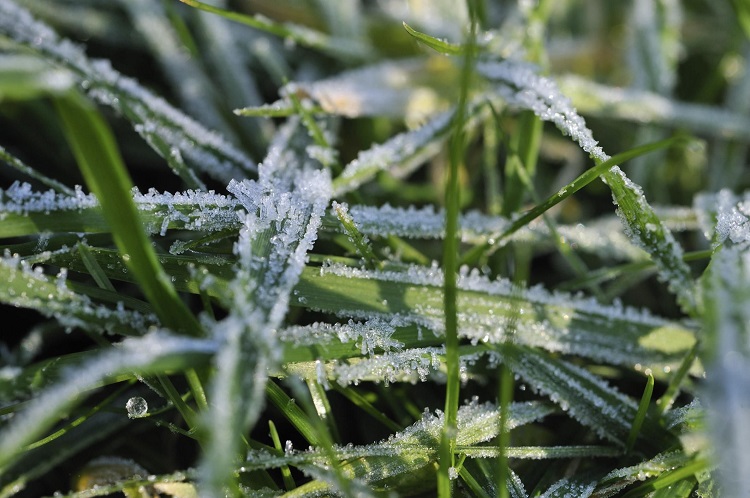
What Is Frost Heave?
You know that frost can harm your grass, but frost heave is also something you should be wary about. It can damage your grass, plants, and soil.
What, exactly, is frost heave? Frost heave is when the soil swells upwards as a result of ice forming during freezing temperatures. Existing moisture inside the soil actually turns into ice.
Frost heave can be damaging to your lawn, but you can keep it at bay as part of your lawn maintenance procedures.
Here’s what you need to know about it and how to deal with it.
What Is Frost Heave And How Is It Formed?

When the ground has been frozen and then thawed, a water source underneath the surface will freeze and push up towards the surface of the soil.
This pushes the soil that’s around it, which causes what’s known as an ice lens, or body of ice. This further lifts the soil and it can damage or even kill the grass in your lawn.
Frost heave contains fine particles that bubble up and then collapse, which causes bumpiness to form in your lawn and makes it uneven.
When Is Frost Heave Likely To Occur?

You can expect frost heave to occur during late fall and early spring, when the temperatures are cold and the soil is packed with moisture.
Interestingly, low-lying areas that are in your lawn are the biggest target of frost heave because the moisture will collect in those areas and become problematic for your soil.
How To Prevent Frost Heave

You should keep frost heave at bay. You can do this in the following ways.
- Insulate your soil: This is a great way to make your soil stronger so that you can prevent frost heave. You can insulate your soil with the use of mulch, such as one that contains wood chips or pine bark. This works effectively to keep temperature fluctuations at bay so that frost can’t penetrate the soil. Make sure you spread a three-inch layer of mulch on the soil.
- Rake low spots: If you have low, uneven areas in your lawn, you should rake them so that you prevent hot spots for water to accumulate. Try to even them out as much as possible. If you’re dealing with a bit of unevenness, you can also remedy it by adding topdressing in the form of a thin layer of leveling mix. This contains compost, soil, and sand.
- Add compost to the soil: You should add compost to the soil to improve how well it drains. This helps to prevent frost heave. The additional benefit of having well-drained soil is that it warms up faster during the spring.
Should You Roll Your Lawn?

You might wonder if rolling your lawn can be beneficial if you want to strengthen it against frost and frost heave. It really depends on the type of soil you have.
If your lawn has soil that’s heavy and filled with clay, rolling your lawn will actually be bad for it. It will compact the soil and decrease how much aeration is in it, which is what you don’t want.
By comparison, if your soil is healthy, well-draining, and it’s coarse in texture, rolling does have some special benefits.
- It reduces dryness in late winter because it presses frost-heaved plants back into the soil. This is especially ideal if you’ve seeded your lawn during the fall or you have sparse areas of the lawn that are in shade.
- As long as your lawn has a good amount of moisture in it, a heavy roller can work well to remove small roughness and unevenness in the soil surface.
- Rolling reduces the lumpiness of your lawn, so it can help you to prevent moisture from pooling, which can cause frost issues.
Related Questions
How does frost damage grass?

Frost freezes the grass so that it becomes stiff. When you walk on the grass in this state, its leaf cells rupture. This causes damage to the grass blades.
At what temperature does frost form?
Frost forms when water vapor on the ground surface is at or below 32 degrees Fahrenheit.
Conclusion
If you’re dealing with frost heave, this can have serious effects on your lawn and garden. To prevent it, we’ve got the most effective methods for you to try. These will ensure you maintain the quality of your lawn grass even during freezing temperatures.
Resources:

